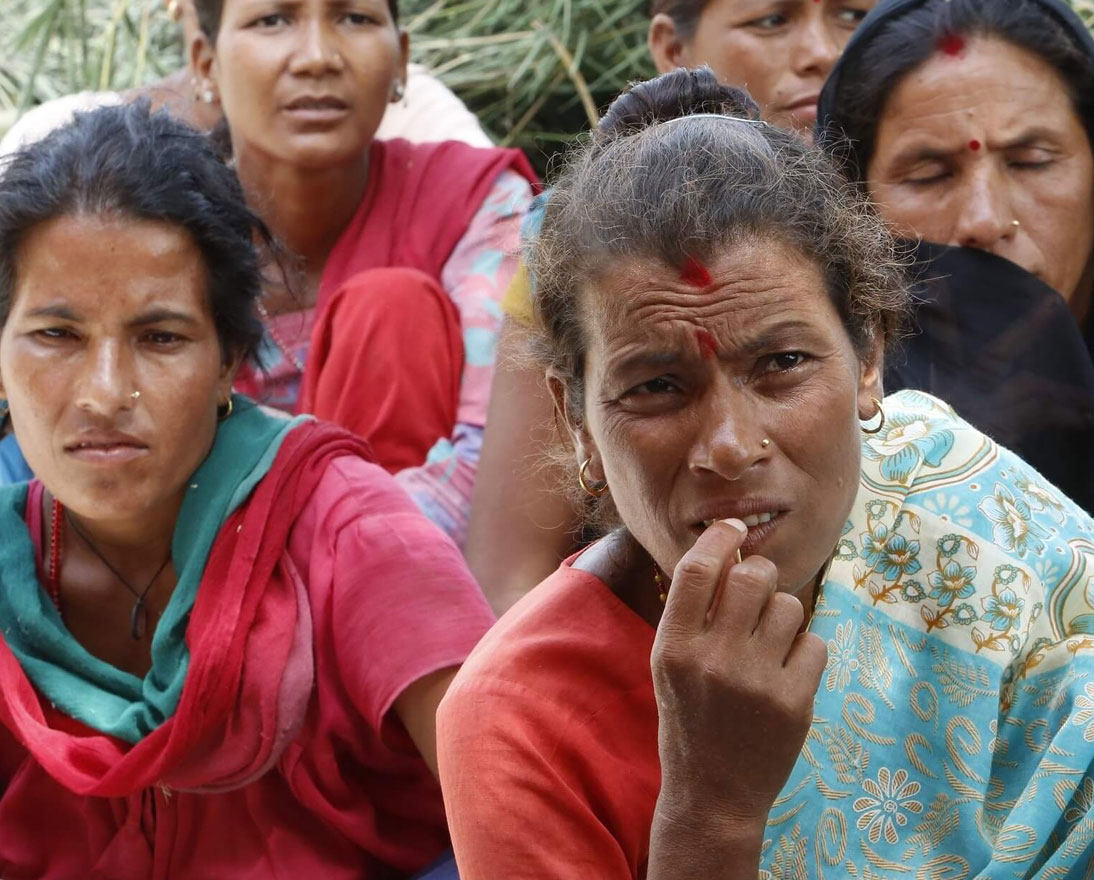Flood warnings save lives in Nepal
Natural hazardsArticleSeptember 10, 20147 min read
Zurich’s flood resilience alliance is working to improve early warning systems to protect people and property in remote areas of Nepal. In August 2014, some of the worst floods in recent memory put these systems to the ultimate test. How did they perform? Learn more about our efforts to help protect communities in western Nepal from deadly floods.
Warning systems put to the test
In July our team of Zurich flood resilience specialists, together with experts from Practical Action, visited communities in the Karnali river basin in western Nepal, an area prone to serious floods. Practical Action is a key part of the Zurich flood resilience alliance and is working to reduce risks and enhance flood early warning systems in this area. We wanted to learn how flood protection there is working. The Karnali river begins in the southern slopes of the Himalayas and flows south through Nepal to India. Monsoon rains often trigger flash floods and mudslides, posing significant risks. Timely warnings about imminent floods can save lives, and help people in the region to protect their possessions. Our visit in July included a stop at the Chisapani river gauge station on the Karnali River, where we learned more about the design of early warning systems. Just four weeks after our visit, the Chisapani system and other systems monitoring the Karnali were put to the ultimate test.
The Chisapani gauge
On the night of August 14 into the early hours of August 15, torrential rain caused the Karnali to rise rapidly. At 1 a.m. on the morning of August 15, the river had risen to over nine meters, triggering an ‘amber’ alert. This set off a warning transmitted through a series of cascading telephone calls across the Rajapur area in Bardiya district. Immediately after receiving and reconfirming the message, members of the Community Disaster Management Committees (CDMCs) in at-risk communities in Rajapur sounded sirens. Community leaders began to help people to evacuate and move livestock to safety.
Worst floods in living memory
The flood conditions worsened. Within two hours the river had risen three more meters, prompting the warning station to send a ‘red’ alert. And the water was still rising. An hour later it was significantly above the maximum measure of the gauge at 15 meters, the Karnali’s worst flood in living memory. People in many communities woke in the middle of the night to find water pouring through their villages. Some were forced to take refuge on the roofs of houses. Inhabitants scrambled to gather as much food and whatever valuables they could. It would have been difficult enough during daylight hours. In the dark it was harder still.
Bardiya and Kailali districts save lives
Following these crucial early warnings, the trails to the flood gauge station in Chisapani became blocked by landslides and torrents making it very hard to provide reliable information to authorities and CDMCs. The official government gauge-reader managed to keep in touch with authorities and communities in both Rajapur and in the neighboring Kailali district. Aware of the danger this situation posed, the area administrator of Rajapur asked the Kailali authorities to mobilize police to open the trail to the river gauge in Chisapani, which they did, re-establishing access to information that helped to save lives.
At least there were no fatalities in Rajapur, even though the devastation was significant. In the communities the shelters were not big enough for everyone. Many people lost homes, food and livestock. Some villages in the Rajapur area were completely flooded. In Chakkhapur, a temple was inundated. There were no fatalities, although one woman was swept five kilometers downstream before she could be rescued from the torrent and taken to safety.
At least in Rajapur, despite problems, the warning system worked. By contrast, in the neighboring Babai River basin (also in the Bardiya district) a critical link seemed to be missing. People in that area got a warning from the river gauge station. But even though the gauge-reader told the authorities about the flood, they failed to grasp how serious the situation was until it was too late. The flood’s destructive force came as a surprise. Even ‘safe’ shelters were inundated. Soon after the flood began, the monitoring station was swept away, preventing any further warnings from getting to communities. Lives were lost and property was destroyed.
Lessons for the future
The flood’s toll was high. Besides over 100 lives lost, across the Bardiya district including Rajapur, about 3,000 families’ homes were completely destroyed and over 11,500 more houses were partially damaged, displacing nearly 81,000 people. The neighboring Kailali district faced a similar situation; nearly 1,000 houses were flooded, displacing 5,000 people.
Almost half of the residents affected in Bardiya and Kailali districts live in the Karnali River basin, one of the areas in Zurich and Practical Action’s programs. As part of the Zurich flood resilience alliance, Practical Action’s team is working to incorporate what we have learned from these latest floods into our efforts in this area. We have gained a better understanding about what works well and where there are still challenges that need to be overcome to make the early warning systems work even better.
The floods that affected Nepal and northern India are tragic but give rise to some hope: they have shown that early warning systems can help to save lives and, to some extent at least, protect property. With a longer lead time and better evacuation stations, the protection level can be increased. One important lesson is that it is of vital importance to protect river gauges not just during ‘normal’ floods, but also in extreme events. The intensity of this year’s flood underscores the danger of unexpected events and suggests that these extreme floods could become the ‘new normal.’ If communities are to survive, we need to continue our efforts to better protect those at risk from the devastating impact of floods in the Karnali area. Even when we have to accept a large degree of uncertainty, we still need to ensure that our flood resilience efforts include worst-case scenarios.
The flood resilience program is a key part of Zurich’s corporate responsibility strategy. To find out more about our activities, please visit our corporate website or contact us at corporate.responsibility@zurich.com
Any information included in this publication, was compiled from sources believed to be reliable for informational and educational purposes only. All sample policies and procedures herein, if any should serve as a guideline, which you can use to create your own policies and procedures. We trust that you will customize these samples to reflect your own operations and believe that these samples may serve as a helpful platform for this endeavor. Any and all information contained herein is not intended to constitute advice (particularly not legal advice). Accordingly, persons requiring advice should consult independent advisors when developing programs and policies. We do not guarantee the accuracy of this information or any results and further assume no liability in connection with this publication and sample policies and procedures, including any information, methods or safety suggestions contained herein. We undertake no obligation to publicly update or revise any of this information, whether to reflect new information, future developments, events or circumstances or otherwise. Moreover, Zurich reminds you that this cannot be assumed to contain every acceptable safety and compliance procedure or that additional procedures might not be appropriate under the circumstances. The subject matter of this publication is not tied to any specific insurance product nor will adopting these policies and procedures ensure coverage under any insurance policy. Nor does Zurich endorse or reject the information presented herein. Zurich’s name and logos are trademarks owned by Zurich Insurance Company Ltd.
© 2013 Zurich Insurance Company Ltd. All Rights Reserved.
Legal note

